I make $176K/year from my clay hobby. Here’s how I did it!
I want to help you build a sustainable, profitable handmade business that makes you consistent income and sales. I only ever teach or recommend marketing, social media, pricing, production and branding tips that I’ve personally used successfully in my own 7-figure handmade businesses.
I'm Mei, from Los Angeles!
Read More
Popular Posts You'll Love
Looking for something?
Categories
starting a business
get more traffic
running a business
make more sales
branding
growing a business
mindset & productivity
podcasts
pricing & money
product photography
reviews
selling on etsy
selling on amazon
social media
selling wholesale
- Facebook0
- Twitter0
- Pinterest0
- 0shares
Let me guess, you’ve probably heard it a thousand times: “Art is nice, but it’s not a real job.” Right?
Maybe you’ve been stuck between doing what lights you up and doing what, well… pays the rent.
You daydream about turning your hobby into something more, but it feels like this foggy “someday” thing.
Or worse, you feel like you’re just playing business: posting, hoping, praying someone finds you, buys something, cares.
Here’s the truth no one told me when I was elbow-deep in polymer clay and feeling like a broke genius:
You can have both. The joy and the income. The fun and the freedom.
Today, I run a polymer clay charm store that brings in $176,000 a year and I work less than a few hours a week on it.
Sounds like a scammy ad, right? But this isn’t about going viral or being some business guru or making 100 reels a month.
This is about five key steps I took to turn my little hobby into a real, thriving business. And I’ll tell you the ONE decision that 15X’ed my sales practically overnight, you’ll want to keep reading.

Finding My Niche
If you’ve been on social media lately, you’d think the only way to build a successful creative business is by posting content every single day and growing a huge following.
That’s what I believed too, for way too long.
But honestly? That approach left me tired, burned out, and barely making sales.
For years, I jumped from one handmade project to another. Handbound journals. Beaded jewelry. Random clay creatures.
I loved creating, but financially? I had almost nothing to show for it.
So what changed? How did I go from hobbyist to running a business that actually thrives?
It wasn’t by grinding harder. It was by getting strategic.
Let me rewind. Back in 2006, I discovered polymer clay and instantly fell in love with it. At first, I made everything – video game pieces, animals, stars, anything that caught my interest.
I’d share my creations on online forums, and every now and then someone would buy one.
But sales were super inconsistent and definitely not enough to build anything sustainable.
The real turning point came when I started focusing on miniature food charms.
I had no idea this was a whole thing, but there’s a huge community of women and girls who are obsessed with tiny food.
I mean, I’ve always loved it too. Growing up, I was that kid who played pretend cooking with fake food.
My neighbor had the Barbie supermarket set with tiny cereal boxes and mini milk cartons, and I wanted it so bad.
Without even realizing it, I had stumbled into a niche that was meant for me.
And that’s really the first key to building a successful handmade business: Find your niche. Not just something you like, but that perfect sweet spot.
Look for these three elements and ideally, you can create a product that meets all of them:
- Something you genuinely enjoy making
- Something with a unique twist that stands out
- Something people actually want to buy
Most artists try to sell everything they can make But being known for one specific thing? That’s where things really start to shift.
It’s so much easier to get noticed and to get sales when people know what you’re about.
Pay attention to the products that naturally get more interest. Some of my bestsellers started as one-off custom orders.
When they took off, I added them to my regular collection, and they kept selling.
So no, you don’t need to be on social media 24/7. You don’t need to be everything to everyone.
Strategic Pricing
If you’ve been selling your handmade work for a while but still feel stuck at the hobby level, you’ve probably had this thought:
“Maybe if I lower my prices, I’ll get more sales.”
Totally makes sense, right?
Lower prices = more customers.
More customers = more money.
Except… that’s not how it worked for me. I once tested pricing the exact same necklace at $28 and $49.99. Guess which one sold more?
The $49.99 one.
And not just a few more, I made way more sales and more profit.
The wild part is that most artists I know seriously undercharge. They’re constantly working, constantly making, constantly burned out and still not making enough to live on.
That used to be me too. When I first started selling my polymer clay jewelry, I priced it at $10–15 per piece. I thought, “It’s just clay. Who would pay more than that?”
People told me I was charging too much. They’d say, “This is cute, but it seems like it’d break easily,” or “It looks like something my kid could make.”
It was frustrating. I felt stuck.
I had two choices: lower my prices even more (which would’ve barely covered my materials) or change how people saw the value of what I was offering.
I chose the second one.
I upgraded from Sculpey III clay (softer and kind of brittle) to Premo clay (stronger, way more durable).
I started using custom-manufactured chains with beautiful, high-quality clasps. I redesigned all my packaging so it looked like something you’d find in a little boutique in Paris, not something you grabbed at a craft fair.
Basically, I gave my brand a glow-up. Then I raised my prices.
And the most surprising thing happened: sales went up. Like, significantly.
Why? Because pricing sends a message.
Low prices often scream cheap instead of deal. You’ve seen it, right? You look at something that’s too cheap and think, “Okay, what’s wrong with it?”
People who are looking for quality, who love something handmade and special, they’re not always looking for the lowest price.
They want something that feels worth it. And get this: your prices attract different kinds of people.
Dollar-store prices? You get dollar-store energy. But when you price with confidence, you attract customers who appreciate craftsmanship and are happy to pay for it.
So if you’re struggling to raise your prices, here’s what you need to know:
- Your prices send a message about your product’s value: low prices can actually signal low quality (how many times has that happened to you? I’ve definitely looked at things that were too cheap and thought something was wrong with them!)
- Your prices attract different types of people. Think about the people who shop at dollar stores versus people who shop at Prada?
- You need to visually communicate the value of your work through professional branding
Don’t try to compete with mass-produced items on price – you’ll never win.
Instead, focus on creating and communicating value that justifies the prices you need to sell your work for to be profitable – which means making more than just covering costs, but to also pay you a healthy income that then pays for your life.
Creating a Professional Online Shop
If you’re serious, like really serious about turning your creative business into your full-time income, there’s one number I need you to see:
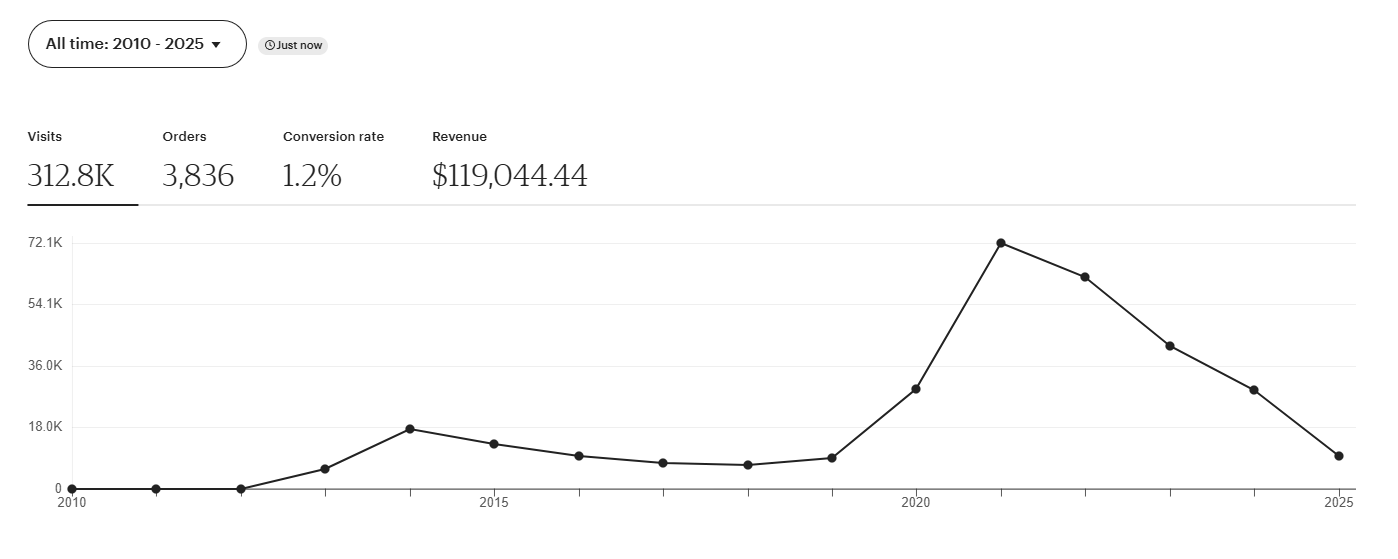
That’s how much I’ve made from Etsy since I first opened my shop.
Sounds pretty great, right? And here’s what I made from my own Shopify website:
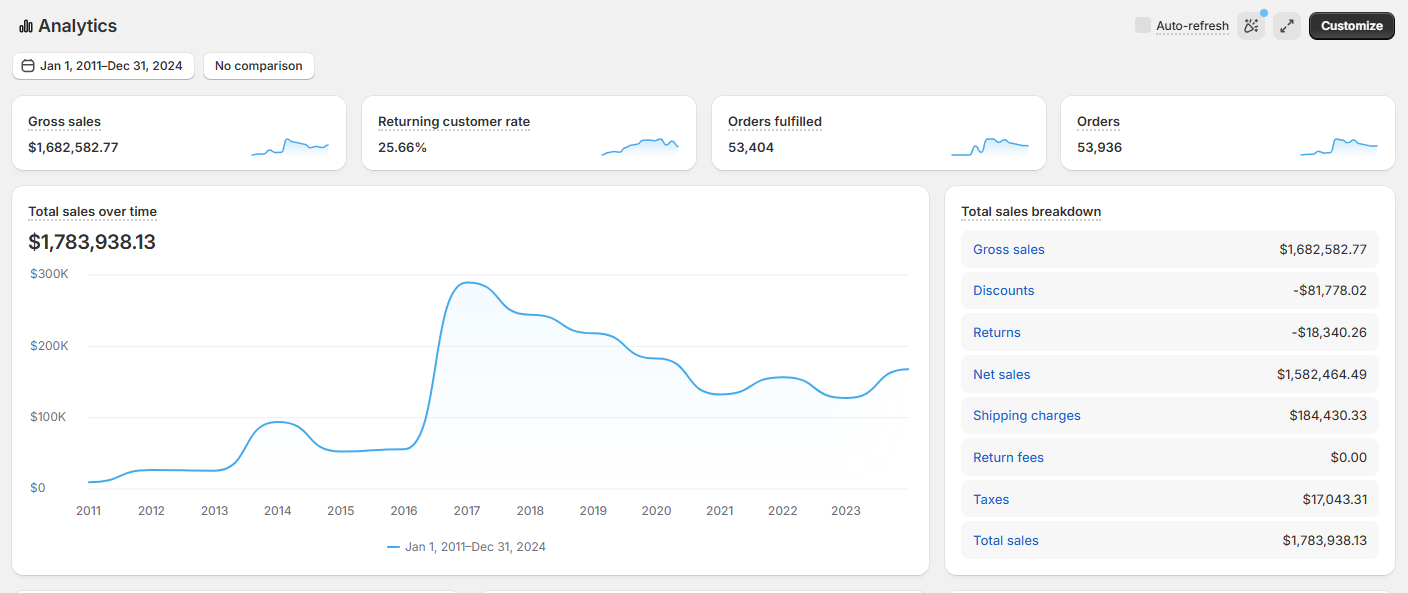
That’s 15 times more revenue from my own website compared to Etsy.
But the crazy thing? Most handmade artists I know still pour all their time, energy, and products into Etsy and only Etsy.
Then they wonder why they’re stuck on the sales rollercoaster.
One month things are amazing. The next? Crickets. And the worst part? You’re not in control.
When I first started selling online, Etsy felt like the obvious move.
It was easy. They had built-in traffic. It felt like the safe choice.
But pretty quickly, I started noticing the cracks. My sales bounced around based on whatever Etsy’s algorithm felt like doing that week.
I was competing with thousands of sellers, some charging way less than I ever could. And I had zero say in how my customers experienced my brand.
It felt like I was putting all my work into someone else’s house. Like I was upgrading a rental property, polishing floors, fixing the roof, decorating the inside but never actually owning it.
That’s when I knew I needed to build something that was mine.
Launching my own Shopify website was the game-changer.
Yes, it was intimidating at first. I didn’t know if anyone would find it. I was nervous about the tech stuff. And I wondered if I could really do it without Etsy’s traffic.
But once I made the leap? Everything changed.
Having my own Shopify website gave me full control over my branding, my customer experience, and my messaging.
I could actually talk to my customers, follow up with emails, send special offers, and build real relationships.
You know what that means? Repeat customers. Loyal fans. People who’ve been shopping with me for ten years. (Seriously. Ten!)
It took more effort upfront, but it created way more stability and growth than Etsy ever could.
And the good news for you is that creating your own professional website is so easy now, and more affordable than it’s ever been, so you have no excuse!
I’m going to show you how to set up a complete online store in less than 30 minutes using Hostinger.
Let me walk you through exactly how to do this. First, go to Hostinger through this link: http://hostinger.com/creativehive
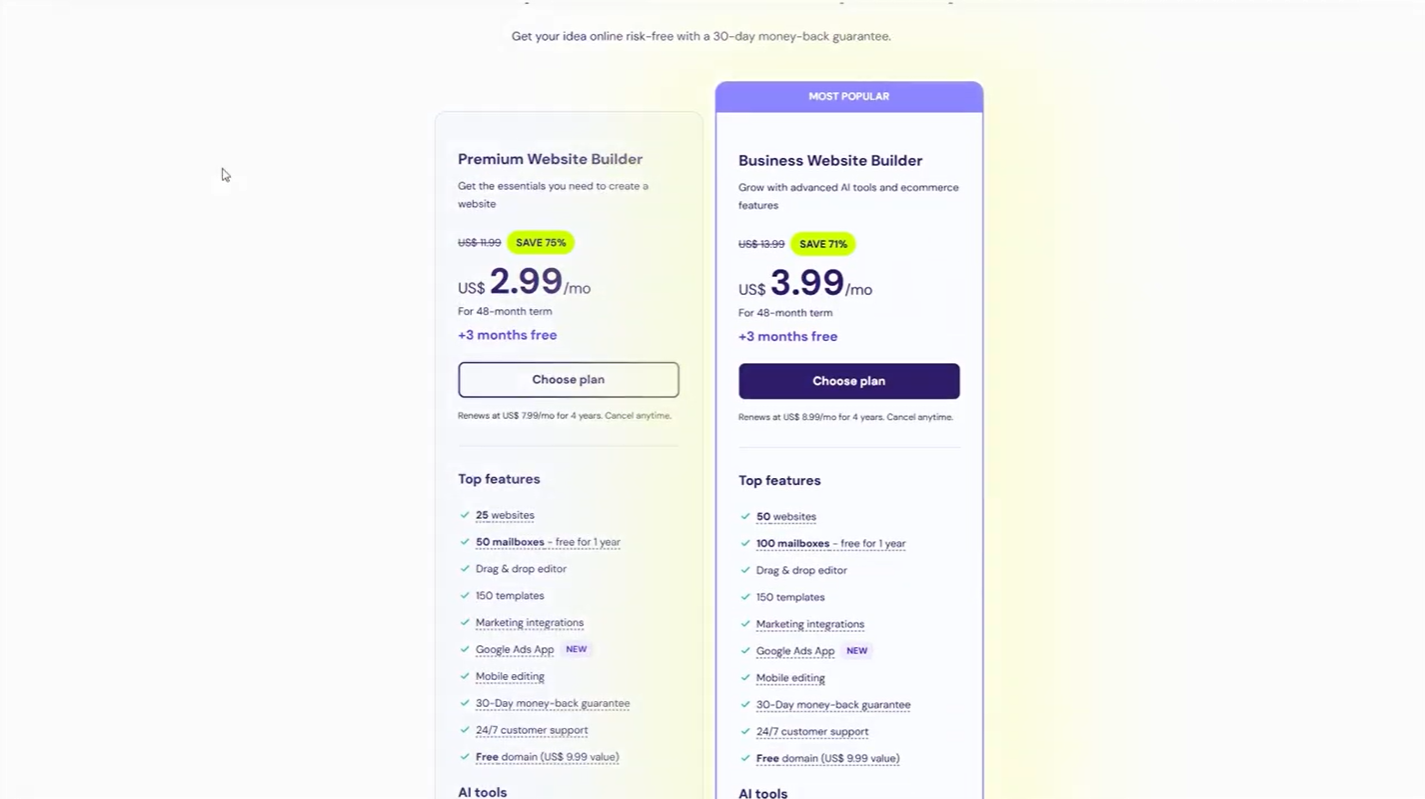
I recommend the Business Plan, it’s built for creative online shops like yours and comes with AI tools that make setup ridiculously easy.
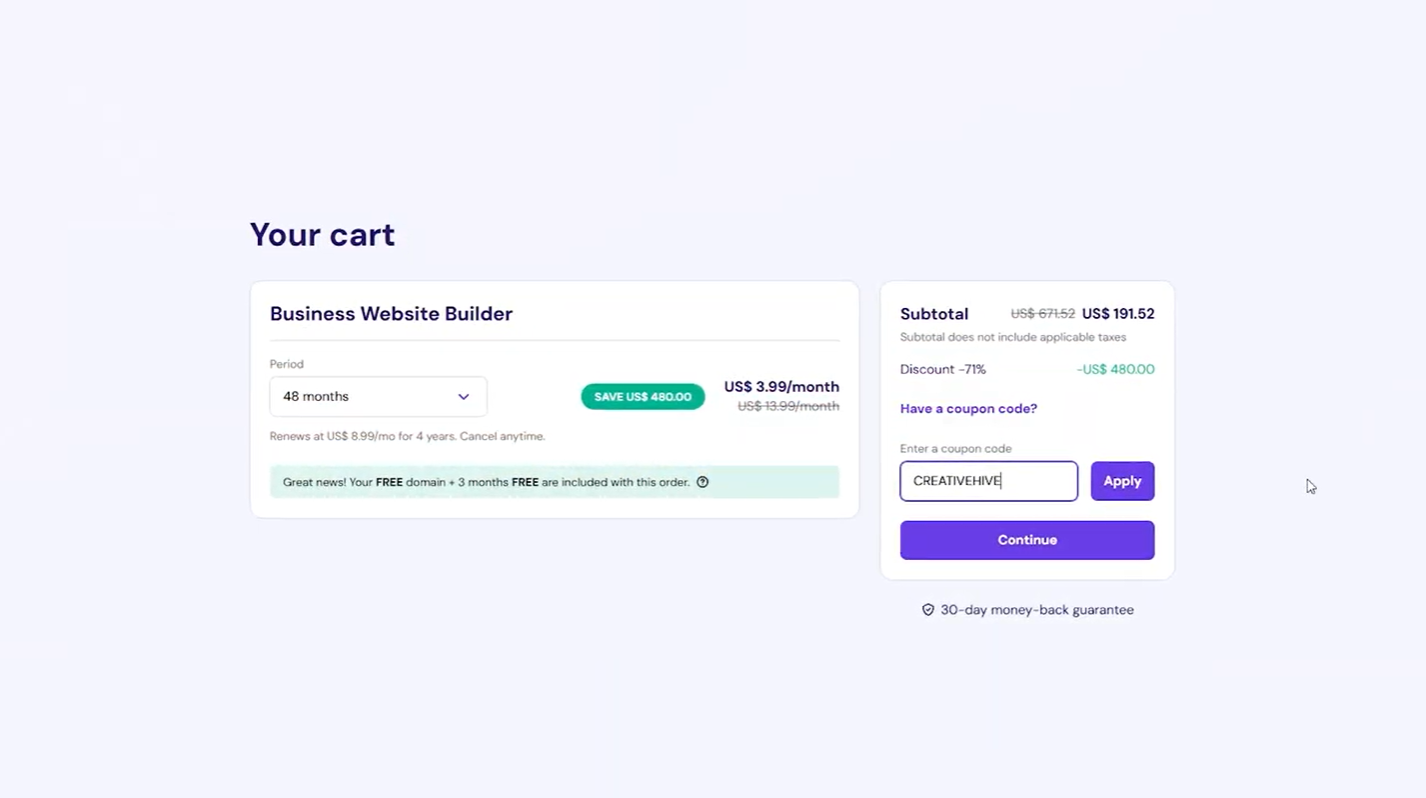
You can use my code CREATIVEHIVE for a discount that makes it cheaper than a fancy cup of coffee each month.
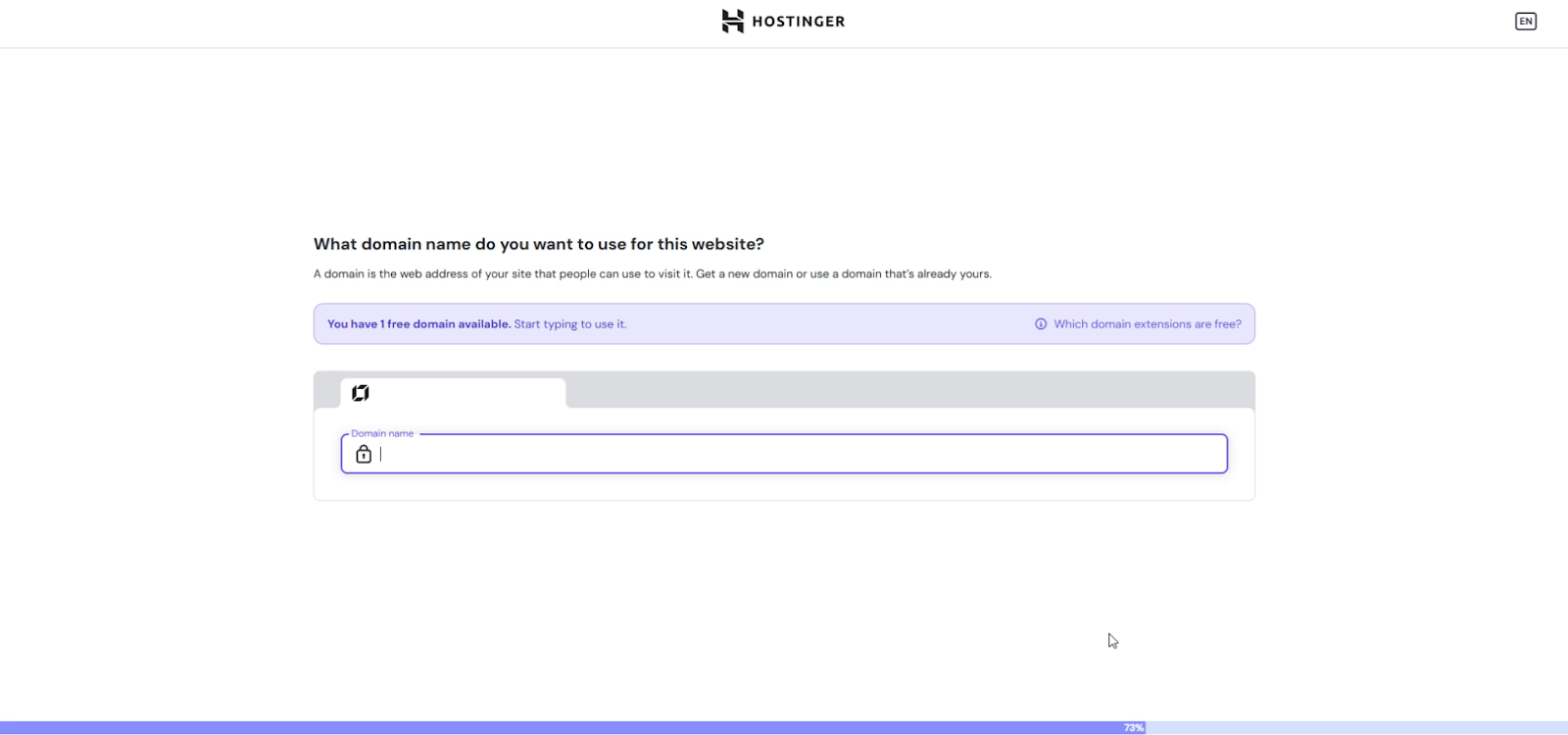
When you’re choosing your domain (aka your web address, like www.tinyhandsonline.com), Hostinger gives you a free .store domain with your plan.
If you’re on a budget and just want to launch ASAP, grab the .store domain. It’s free, easy, and honestly, most of the good .com names are taken anyway.
This solves that problem and saves you $10–15 a year.
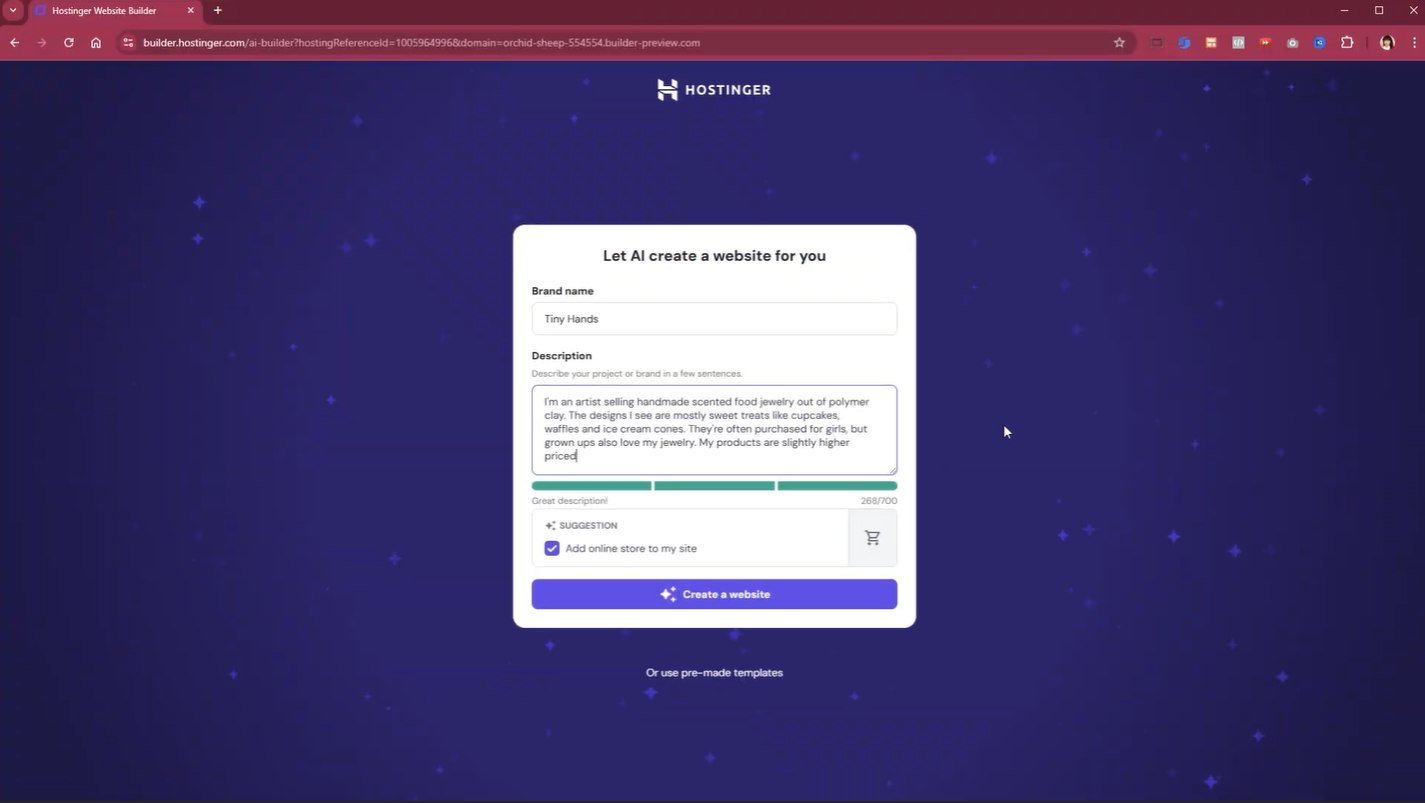
Now, this is where Hostinger really shines for creative business owners. Their AI Website Builder creates a professional store in literal minutes, even if you have zero design skills.
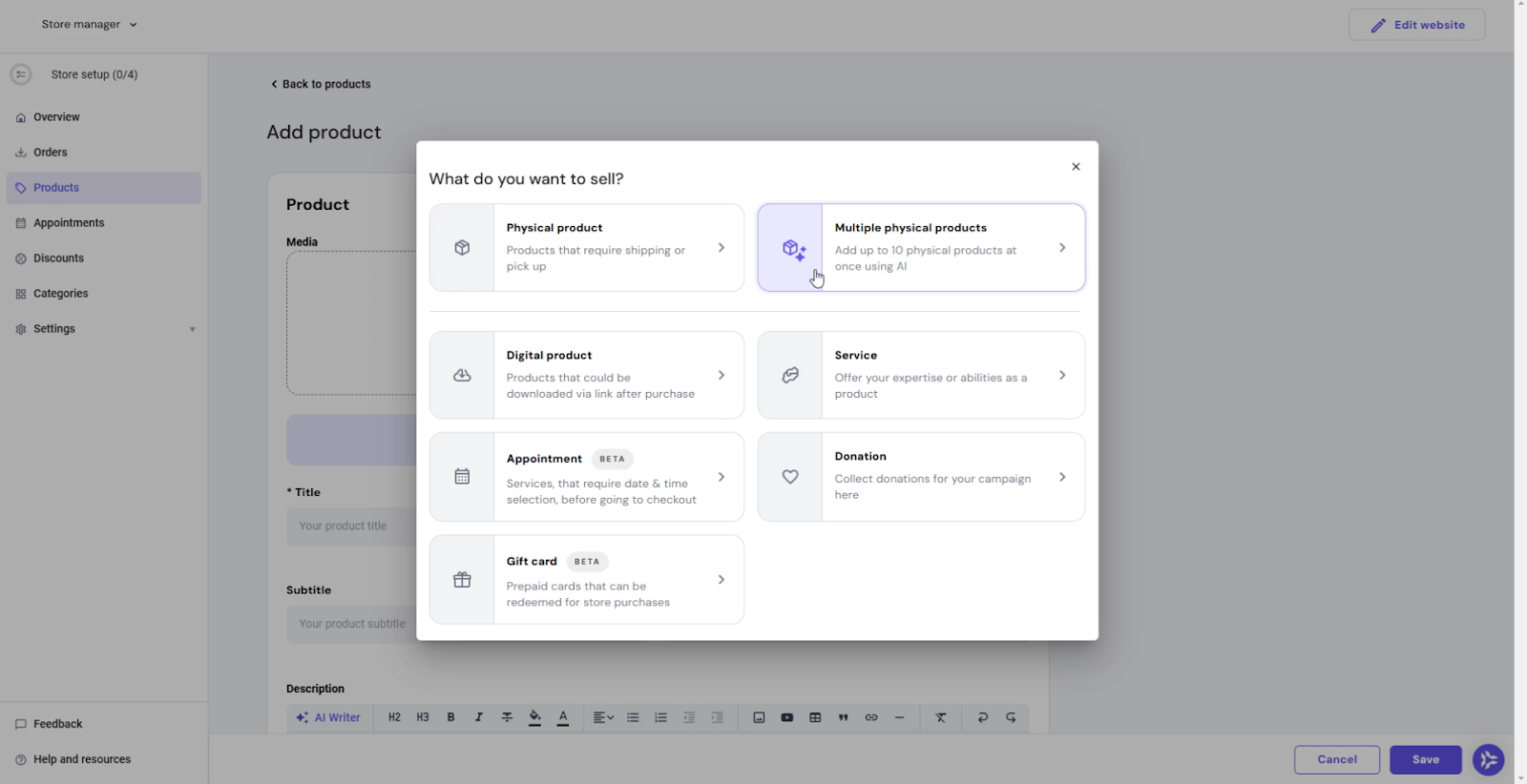
One feature I especially love is the AI Writer. If writing product descriptions makes you break out in a sweat, this tool will save your life.
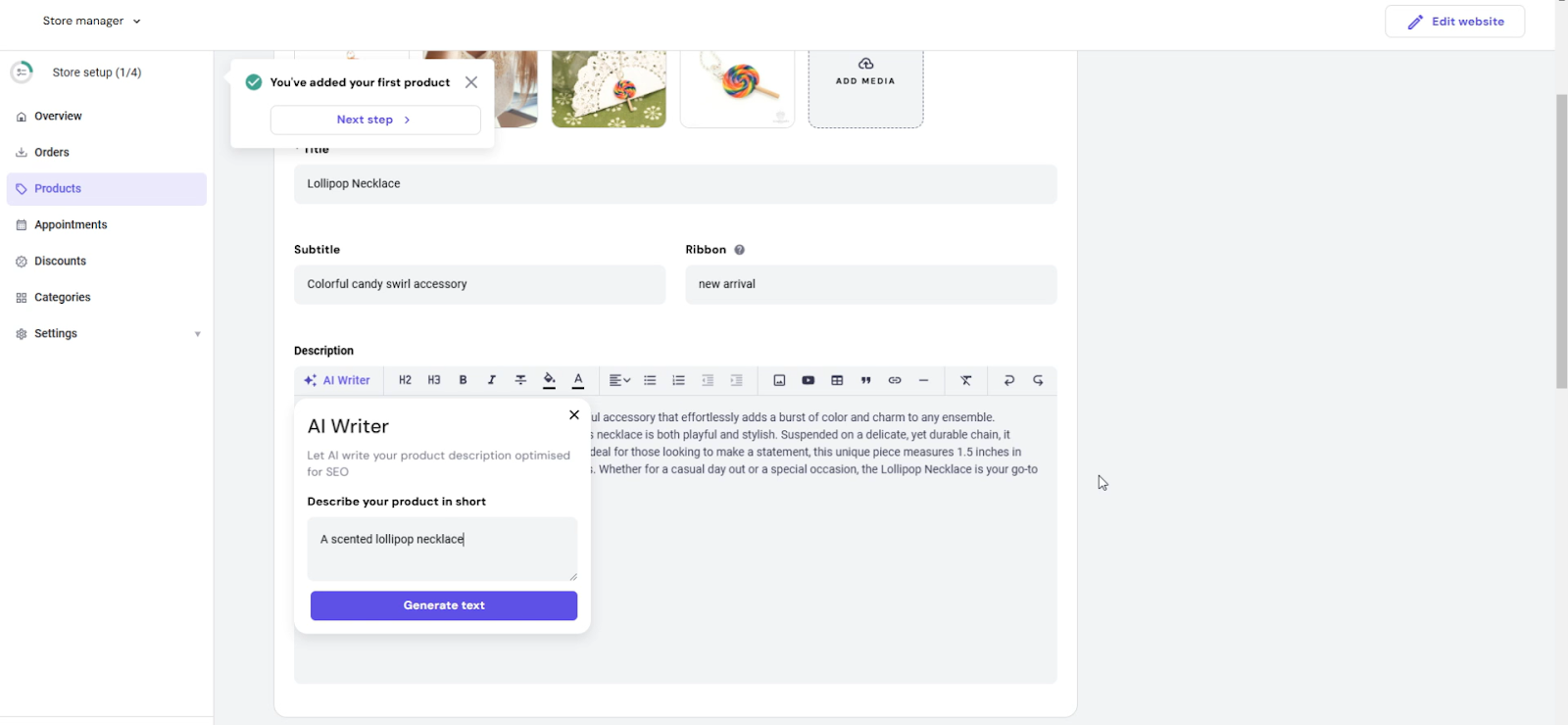
Just enter a few details about your product, and it writes a solid, persuasive description that actually helps sell your work.
This would have taken me weeks when I was starting out!
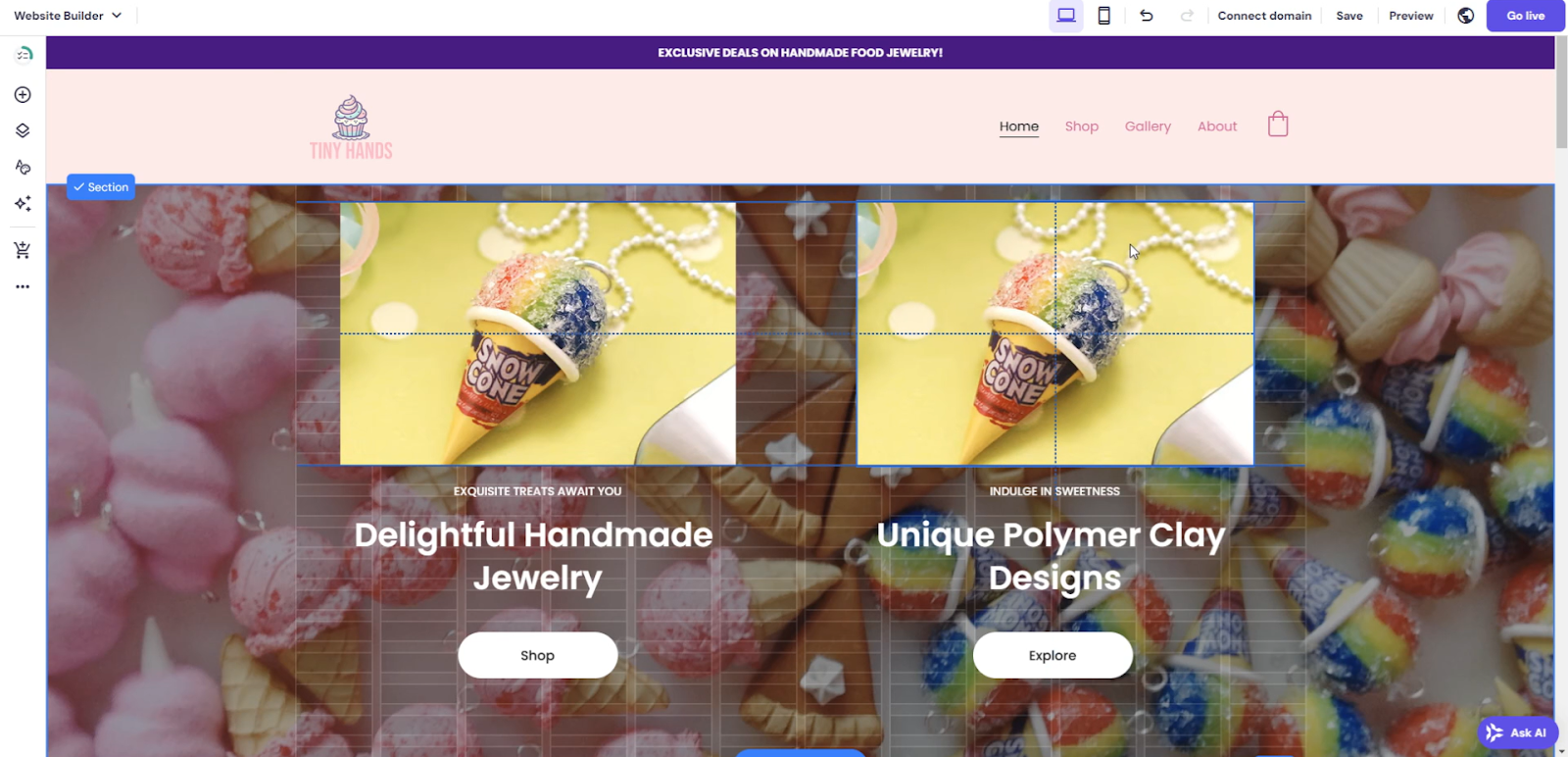
The drag-and-drop editor is also really cool.
You can use this to customize your website even more, and it’s really flexible while still giving you good guard rails so you don’t accidentally break your site and make it look unprofessional.
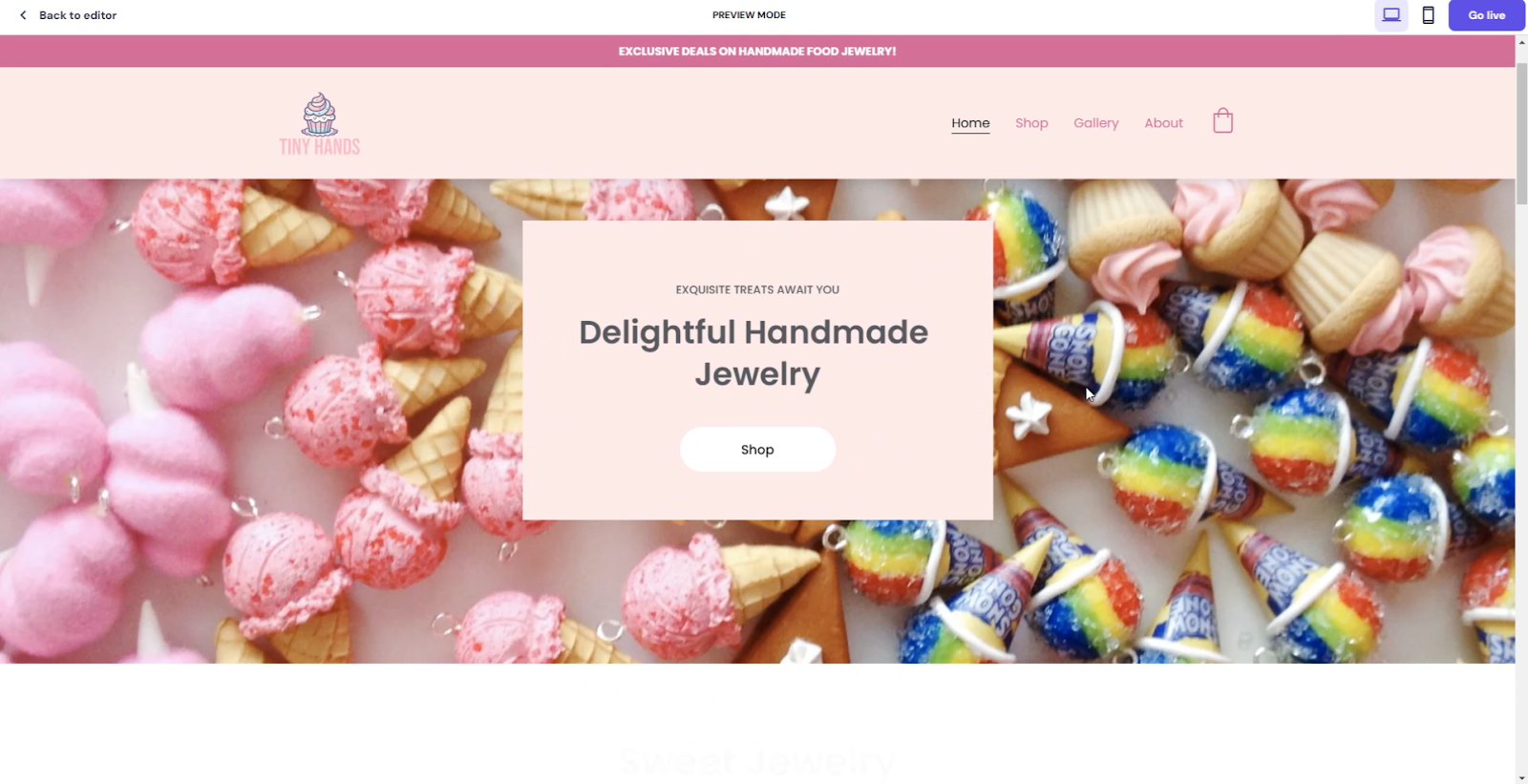
In less than 30 minutes, you’ve got a beautiful, functional website that’s yours and start selling
Having your own website isn’t just about looking professional. It’s an investment into building a business asset you control completely, and no one can take away from you.

Media Outreach Marketing
Most creative business owners think social media is the way to get sales.
So they spend hours making content, chasing followers, posting every day like clockwork. And after all that time and effort? No sales.
I was right there with you. I did everything the “experts” said, posted daily, used all the hashtags, made reels, shared behind-the-scenes.
Even after growing my following, I still wasn’t getting enough sales to make a real living.
The algorithm was tanking my reach, my engagement was dismal, and it felt like I was shouting into the void.
Then I tried something completely different. And it changed everything, literally overnight.
This approach brought in multiple orders a day. It’s free (aside from the cost of making and shipping your products), it doesn’t require daily posting, and the results actually last. Even years.
So what is this magical marketing strategy?
Media outreach.
Getting featured on blogs, websites, podcasts, gift guides, even magazines. And before you click away thinking “That’s for big brands, not for me”, just hold on.
I was making food-themed polymer clay jewelry in my kitchen when I started doing this.
At first, I did what everyone else did. I tried to build my own audience. Instagram, Facebook, posting every single day, grinding away for scraps of attention.
I got to 10,000 followers and thought I’d finally made it. But barely anyone saw my posts.
And the people who did? Weren’t buying. It was like I was feeding a hungry beast that demanded more and more.
Then I thought, what if I didn’t build my own audience? What if I could borrow someone else’s?
So I made a list. Websites, blogs, and magazines my ideal customers were already reading. But I didn’t just pitch to jewelry sites. Nope. I thought outside the box.
Food blogs, because my jewelry looked like desserts. Gift guides, because they were perfect for quirky gift lovers. Even camping magazines, because of my mini s’mores necklace.
I sent them short, friendly emails. Not begging. Not over-explaining. Just showing why their readers would genuinely love my stuff.
The results were amazing. One feature in a popular blog brought in more sales in a single day than I’d made the entire previous month on social media.
A mention in a magazine would bring in orders for over a year because people were still reading that past magazine issue or you know, they keep them in the doctor’s office.
So how do you do this?
- Research where your customers are already hanging out: blogs, YouTube, podcasts, digital or print magazines.
- Think beyond your niche, ask yourself, “Who else would love this product?”
- Send a short pitch that highlights why their audience will care. Not why you need the exposure. Why their readers will love your product.
- Follow up if you don’t hear back. (Professionally, not pestering.)
Then, when you land a feature, use it everywhere. Add the “As Seen In” logos to your website. Share the article and use that credibility to build trust.
Because that’s the real power here. When someone else talks about your product, it’s so much more believable than when you say it yourself.
Social media posts disappear in hours. Media features stick around. They work behind the scenes while you sleep. They build momentum and they snowball.
I call it the domino effect. One feature leads to another, and another, and suddenly people start recognizing your brand.
If this sounds like something you want to try, I go deeper into it in my free workshop.
I’ll walk you through how to find the right places to pitch, what to say, and how to make this work even if you’ve never done it before.
If you want to join, just visit this link: https://tinyurl.com/23296n62
Scaling With a Team
A lot of store owners hit a point where things are going okay. They’re making decent money.
But they’re working all the time. They can’t grow because everything depends on them.
If they stop, the business stops. Sound familiar? I’ve been there too.
When I hit six-figure sales, I was making charms non-stop. My hands cramped up. My back and neck ached. I had zero time to think beyond the daily grind.
And during the busy seasons? It ate into my personal life.
So, I had a decision to make. I could either cap my growth at what I could personally produce or I could figure out how to scale without becoming a slave to my business.
Let me tell you, the idea of handing off production was terrifying. I was afraid the quality would drop, that customers would start complaining.
I wasn’t sure I could teach someone else how to make my charms either.
But here’s what I learned: you can’t hit six figures alone. You have to scale.
I started small with one assistant, one product and it wasn’t easy. People came and went, and for a lot of them, it just wasn’t a good fit.
But slowly, I built a team of five incredible production assistants. Now, they make 90-95% of everything sold through my shop, while I focus on running the business.
This shift completely transformed my life. Today, I work just five hours a week while my business generates $160,000 annually.
If you want to scale beyond your own capacity, here’s what I learned:
- Document your processes before you hire – create detailed videos or guides showing exactly how to create your products
- Start small with one assistant and one simple product
- Give clear, specific feedback and be patient with the learning curve. You need to want them to succeed so do your best to invest time here.
- Use quality checks to maintain your standards and keep customers happy
- Gradually expand your team’s responsibilities as they prove themselves
This approach works for virtually any creative business.
The real magic happens when you transition from being a maker who happens to own a business, to a business owner who happens to make things.
The moment that truly changed everything for me was when I stopped treating my creative hustle like a hobby.
I started treating it like a real business. I invested in a professional website. Got strategic with my marketing. And created systems that could scale beyond just me.
And if you’ve ever felt like you’re still stuck in hobby mode… trust me, I’ve been there. But you’re not “too late,” “too small,” or “too unknown” to turn this around.
It won’t be an overnight thing, but I promise, every small step you take builds the momentum you need to make this work.
Start with one thing. Choose one step from this blog and take action this week.
You’ve got the talent. Now it’s time to build the business to match.
________________________
If you’re ready to stop being stuck and level up, check out Hostinger.store through this link: http://hostinger.com/creativehive
Use the code “CREATIVEHIVE” to get a special discount.
Their Business Plan has everything you need to start selling right away.
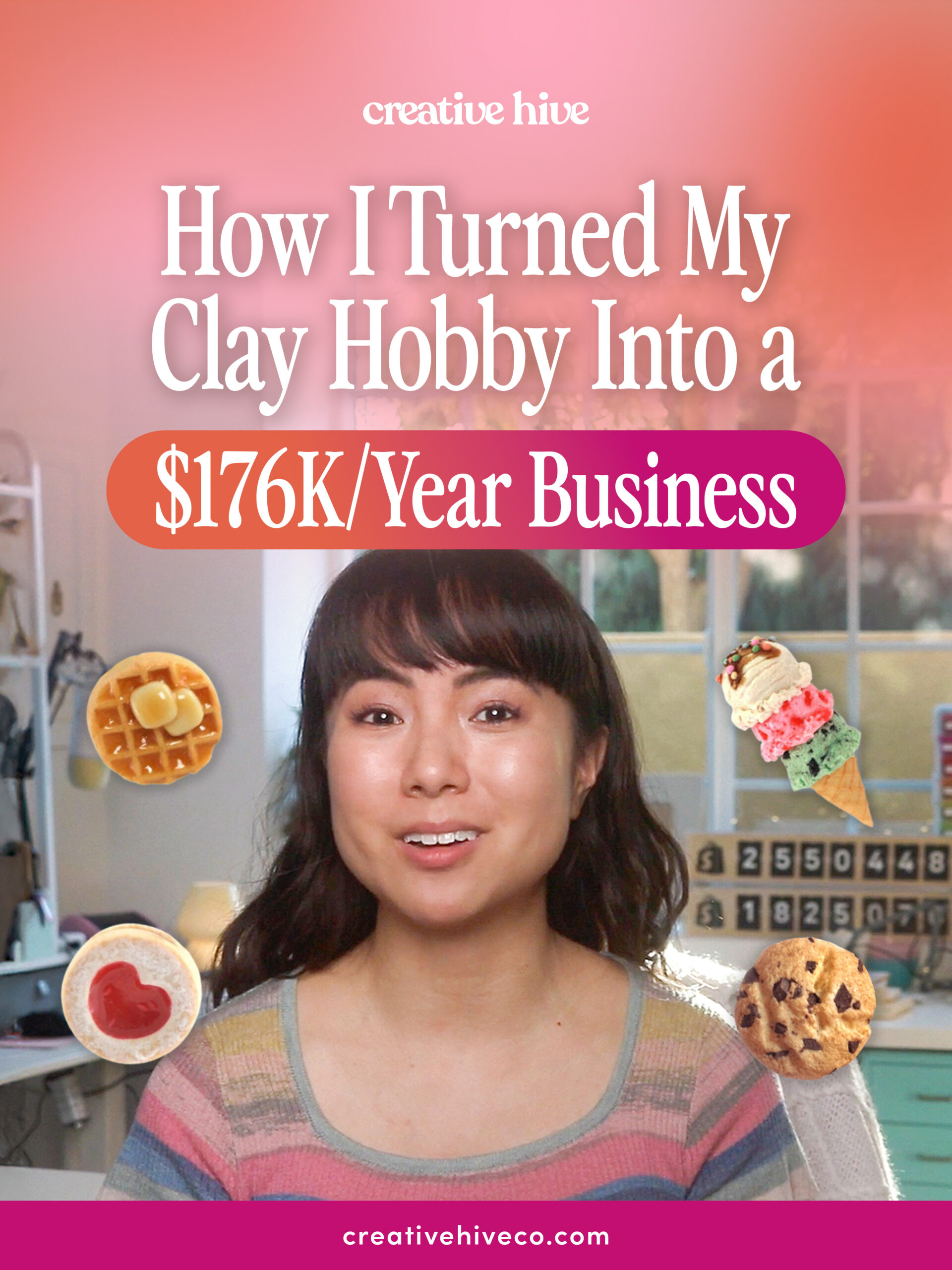
Leave a Comment
Liked this article? Share it!
Unlock a Profitable Handmade Business
in Just 12 Weeks Without Using Etsy
or Social Media
FREE WORKSHOP
This workshop is for anyone who makes and sells a handmade or physical product, including jewelry designers, artists, paper designers, bath & body product makers and more!
What You'll Discover
The #1 mistake people make with Etsy & social media that causes shops to FLOP
The secret to making it with your handmade shop so it's no longer just a hobby
How to make sales in your handmade shop with ease so you can finally get to 6-figures
TAKE ME THERE
Your email address will not be published. Required fields are marked *
Leave a Reply Cancel reply
About
Blog
A Sale A Day
Student Login
Free Class
Contact
Terms
Become A Student
Watch On YouTube
Student Reviews
See My Handmade Shop!
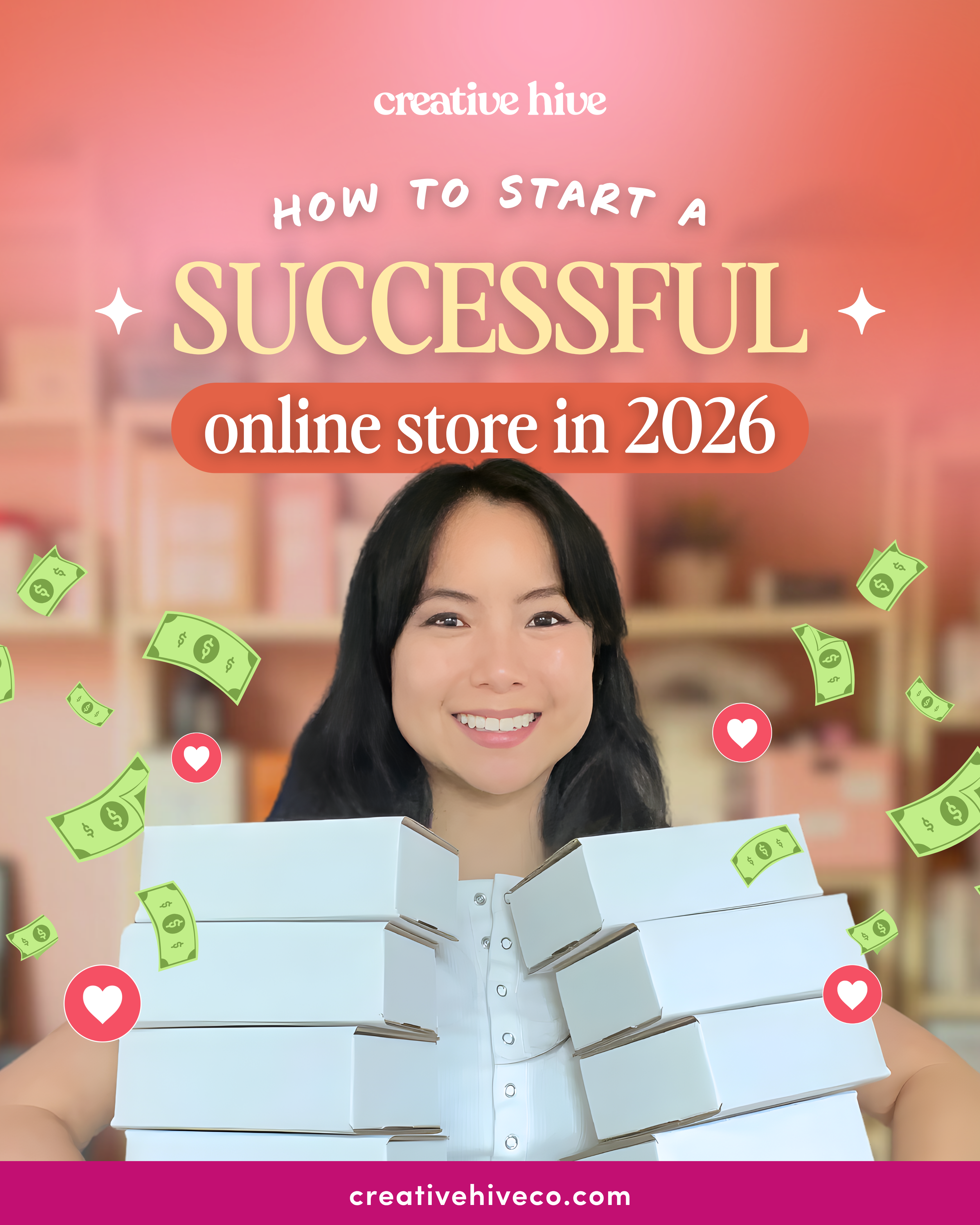
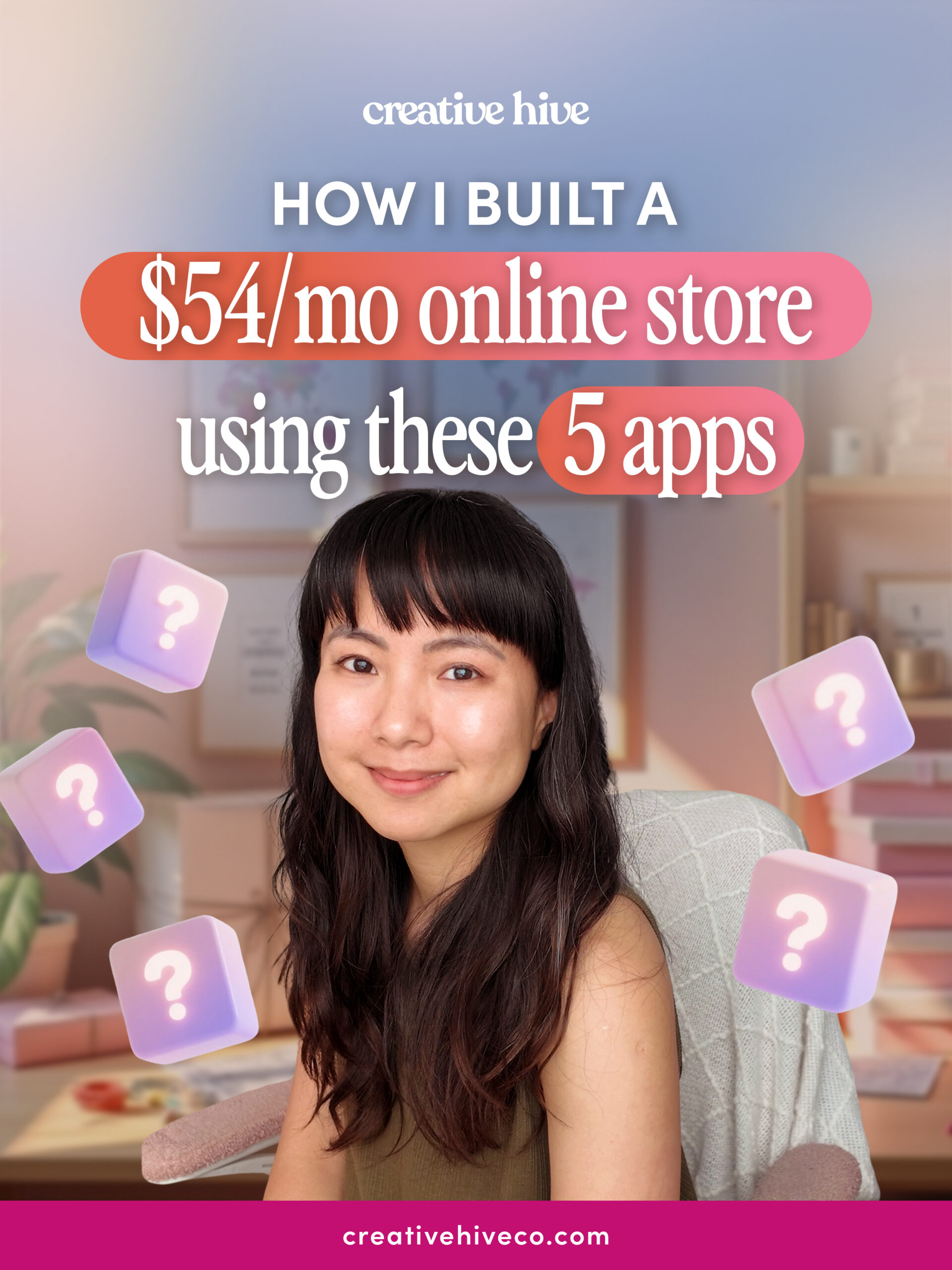

This is a fantastic and relatable opening! It immediately connects with the struggles many creatives face when trying to monetize their passion. The narrative draws readers in by acknowledging common fears and offering a compelling solution, culminating in a strong hook.
This blog is amazing kroger feedback survey
I was so faced with a choice. I had two choices: either limit my expansion to what I could personally create or find a way to scale without letting my business control me.
The rhythm-based arcade game Space Waves combines futuristic graphics, music, and reflexes into one thrilling experience.
I’ll walk you through why HCTRA is a game-changer for Houston commuters.
This is really impressive work! The content is clear, engaging, and well-organized, making it enjoyable to read from start to finish. It’s obvious that a lot of effort and thought went into creating it, and the attention to detail really shows. Overall, it’s a high-quality piece that leaves a positive and lasting impression.